Sushi Bake is your favorite rice dish in a casserole form! It's easy to make and delivers the delicious Japanese flavors you love with no special sushi chef skills required.
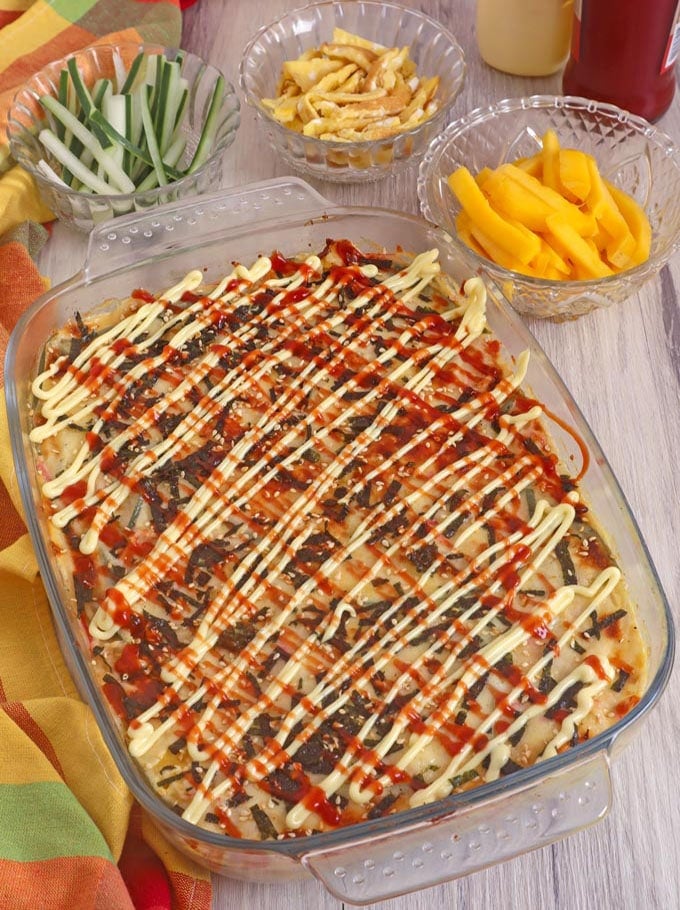
I've had this baked sushi cooked, photographed, and ready to go way back in May on the height of its popularity, but my procrastinating self never got around to posting the recipe. Well, better late than never.
I don't think I'm too not too late for the party, though, because I'm still seeing the casserole making its rounds on social media. And if the hype has indeed waned, sushi bake deserves a push back to the limelight. It's just as tasty and fun to eat as when it was all the rage.
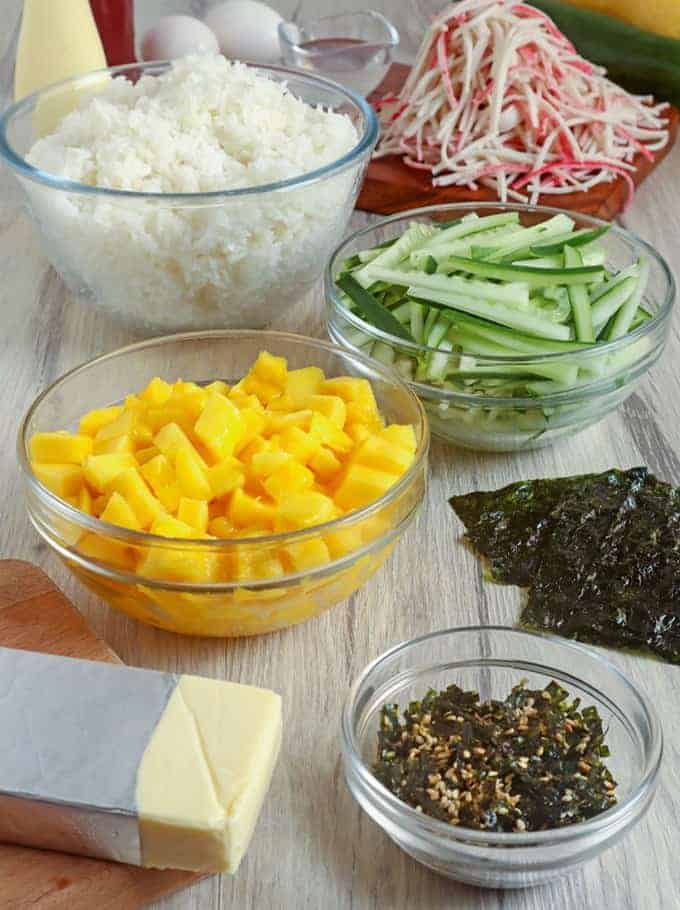
The origin
Although there is no definitive history of how the sushi casserole idea came about, some articles suggest it might have originated in Hawaii which also gave birth to the poke bowl and spam musubi.
This baked seafood and rice might have just recently taken the Philippines by storm, but it has been around for a while. Recipes or early mentions of the dish can be found online dating as far back as 2011!
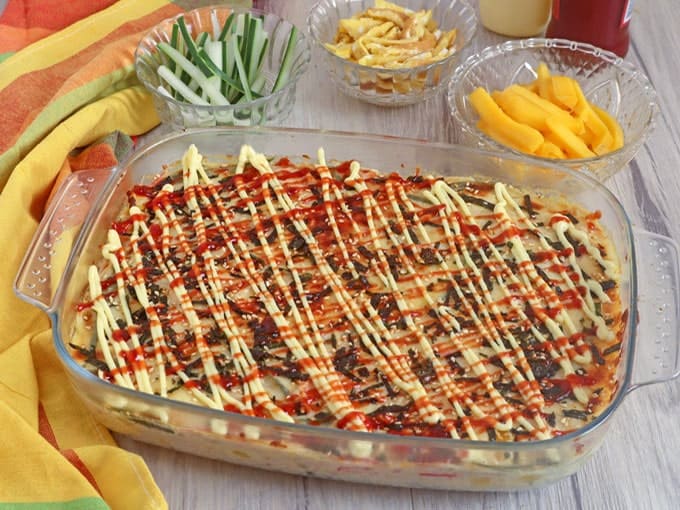
Sushi bake, simply put, is a broken-down version of the maki. Instead of rolling the rice around various fillings and wrapping with a sheet of dried seaweed, the different components are layered in a baking dish and finished off in the oven.
When hot and bubbly, the partakers then help themselves to bite-sized scoops of the rice and toppings and make small rolls with nori sheets. A truly delicious and fun experience!
How to Make
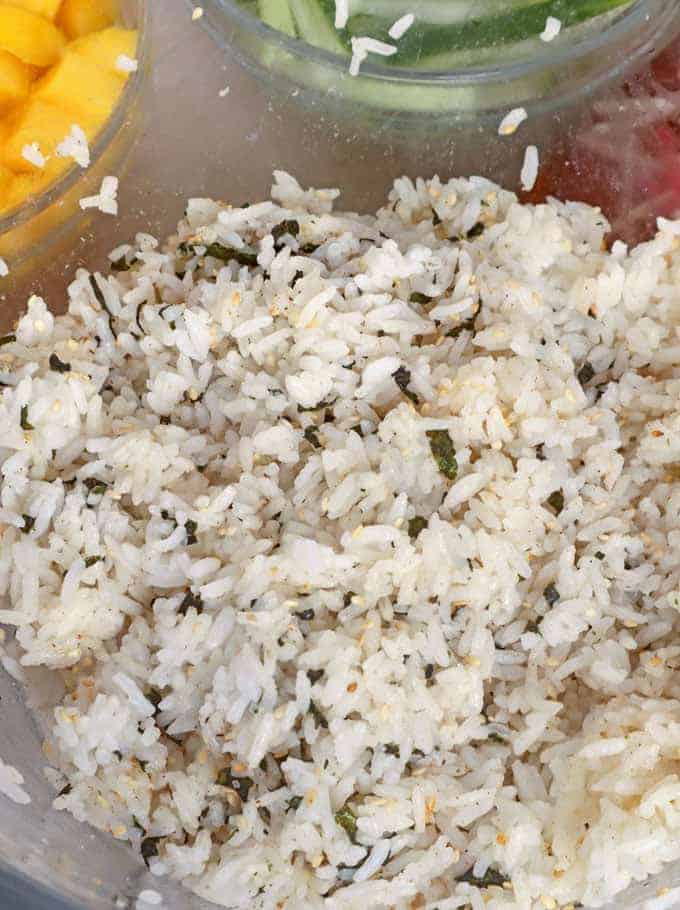
The rice layer
Sushi rice is traditionally made of Japanese short-grain rice (meshi) which is characterized by the stickiness of its grains. This higher starch amylopectin content makes Japonica cultivar easier to eat with chopsticks as well as to shape into various sushi styles.
- While the sticky and starchy variety is best, Jasmine rice can be substituted in a pinch. Just increase the amount of water used in cooking for a softer texture.
- Wash the rice well until the water runs clear. For umami flavor, cook the rice with a piece of kombu or dried kelp.
- The word sushi actually means "vinegared rice" and not "raw fish". The steamed rice is flavored with rice vinegar, sugar, and salt to achieve a delicious balance of sweet, salty, and sourish taste.
- Toss Furikake seasoning with the vinegared rice or sprinkle on top. This seafood flavoring, which is a savory mixture of bonito flakes, sesame seeds, chopped seaweed, sugar, salt, and MSG, is available at most Asian supermarkets or online. For a simple DIY option, quickly toast dried dilis (anchovies) on a hot skillet, grind in a food processor into a coarse powder, and combine with nori strips, sesame seeds, sugar, and salt.
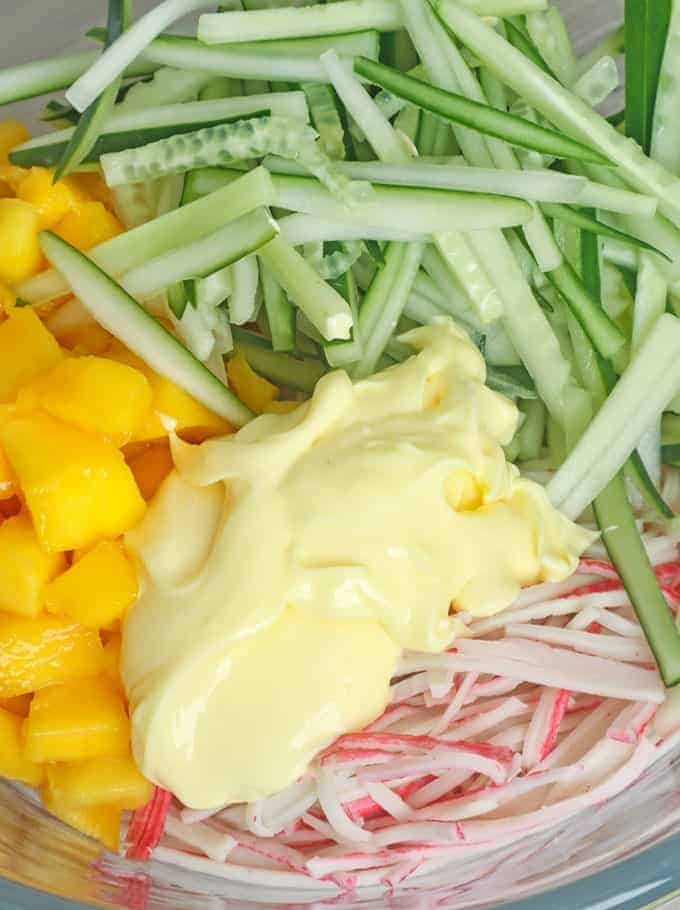
California roll topping
- Along with shredded imitation crab (kani) and julienned cucumbers, we're adding diced Manila mangoes for a pop of color and fresh fruit flavor.
- The seafood salad is pulled together by Japanese mayo (Kewpie) for creaminess. As an easy substitute if Kewpie mayo is unavailable, stir in rice vinegar and sugar to regular mayo to taste.
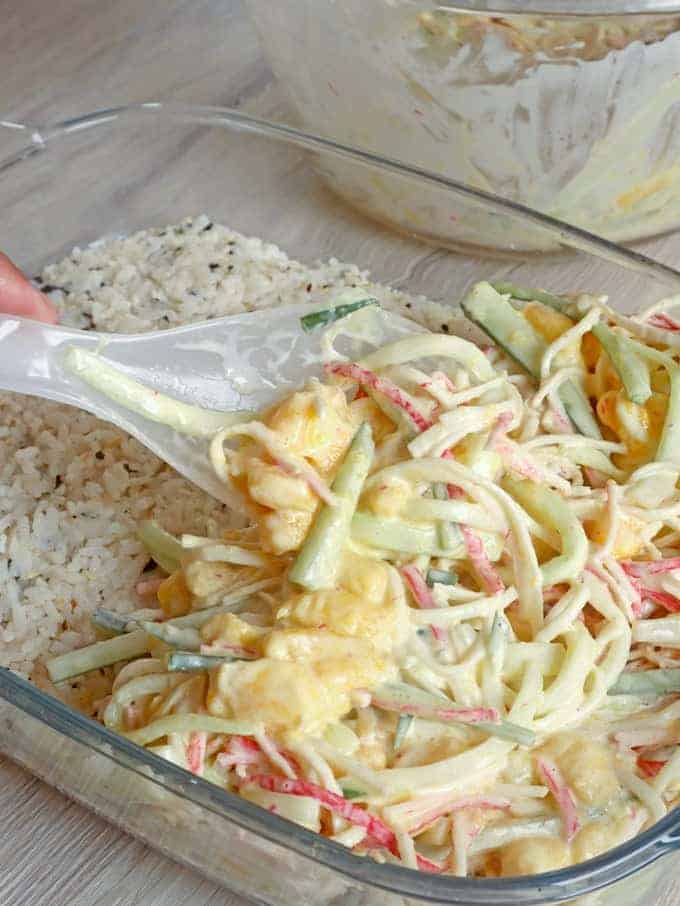
- Baked sushi is not only easy and fun to make, but also adaptable. You can go as simple as canned tuna or this kani salad for a budget-friendly option or fancy it up with more expensive choices such as salmon, shrimp (ebi), lump crabmeat, scallops, crawfish, or fish roe (tobiko).
- For a vegan version, you can use garbanzos, shitake mushrooms, firm tofu, or assorted veggies, and toss with vegan mayo.
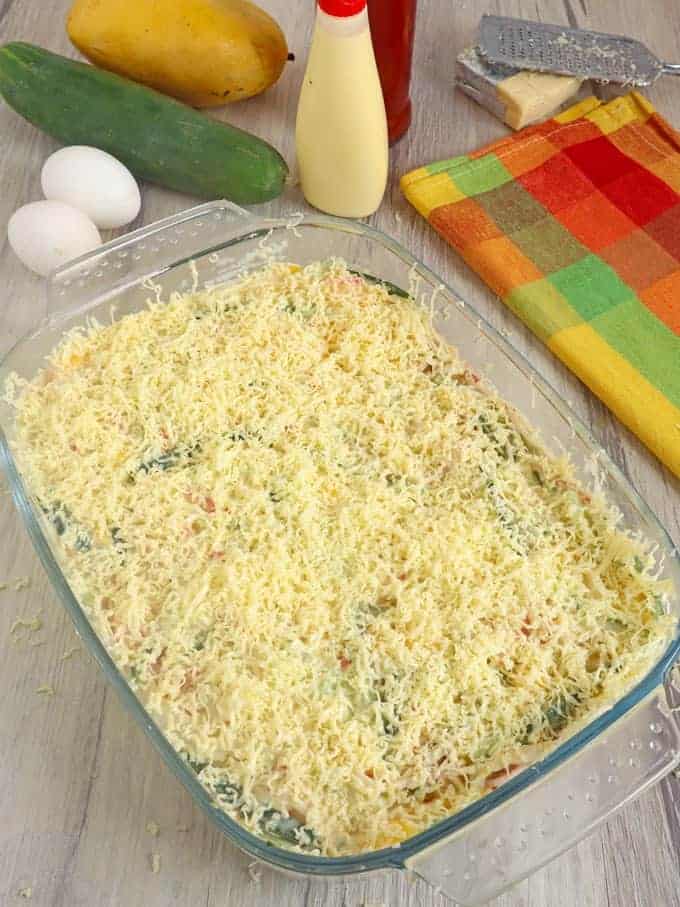
The cheese layer
- After layering the creamy kani mixture, you can simply sprinkle more Furikake for extra color and then bake. We are, however, taking things up a notch and loading it up with shredded cheese! The result is a cheesy layer that's both golden brown and creamy!
- To tone down the richness, skip the cheese and drizzle mayonnaise and Sriracha sauce (if you want a bit of heat) on the assembled casserole in a decorative pattern before baking.
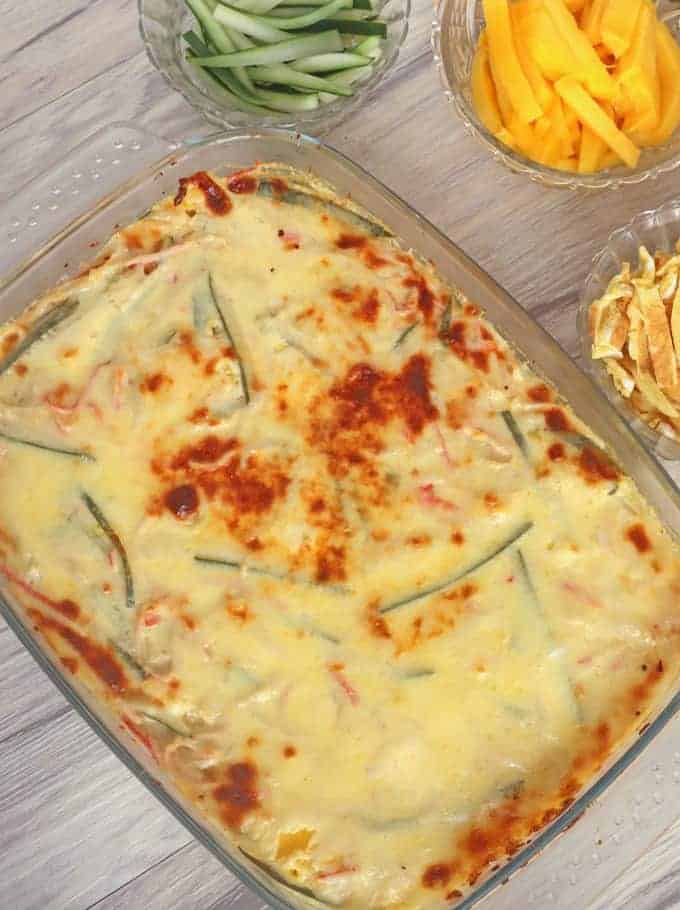
- After baking, sprinkle with more furikake and decorate with mayo and Sriracha as desired.
- You can also arrange diced mangoes, julienned cucumbers, sliced avocados, and egg omelet strips (tamago) on top of the sushi bake or serve these garnishes on the side.
- If you prefer it cold, omit the cheese, and serve without baking.
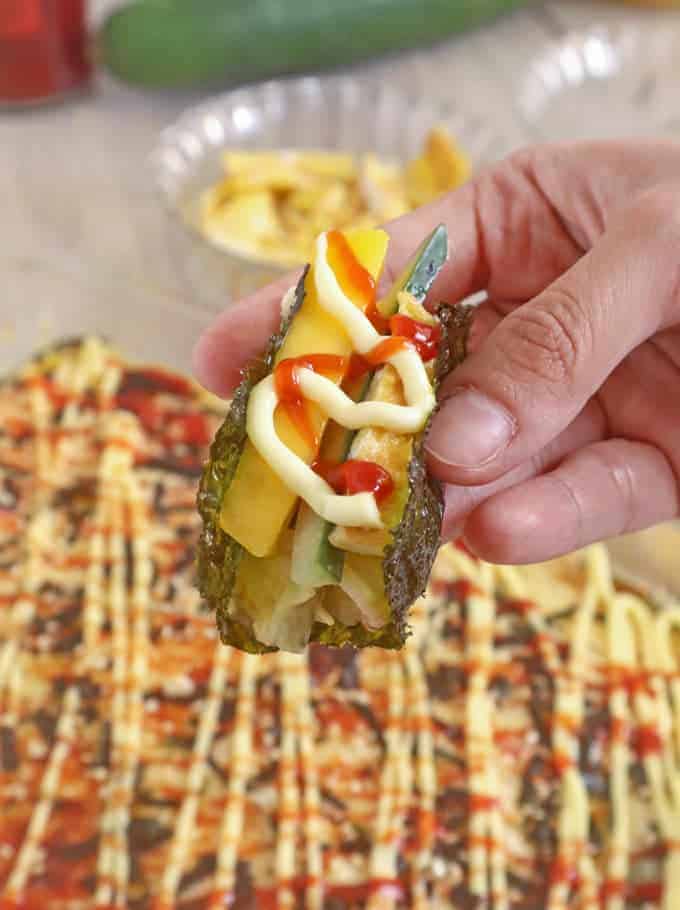
How to serve
- Serve as a delicious and filling midday snack, appetizer, or main dish.
- Cut the casserole into small squares or simply scoop a bite-size portion and wrap with nori seaweed. Top with mangoes, cucumbers, avocadoes, and/or egg strips for added fresh flavor and crunch.
- Baked sushi is best eaten fresh from the oven. If you do have leftovers, transfer in an airtight container and refrigerate for up to 3 days.
Ingredients
For the Sushi Rice
- 4 cups cooked short-grain rice
- 2 tablespoons rice vinegar
- 1 teaspoon salt
- 1 teaspoon sugar
- ¼ cup Furikake
For the Kani Salad Topping
- 2 cups Imitation crab (kani), shredded
- 2 mangoes, peeled and diced
- 1 cucumber, julienned
- ½ cup Japanese mayonnaise
- ½ cup quick-melt cheese, shredded
- Nori seaweed sheets
Garnishes
- mango, peeled and diced
- cucumber, julienned
- egg omelet, sliced into strips
- Japanese mayonnaise
- Sriracha sauce
Instructions
For the Sushi Rice Layer
- In a large bowl, combine cooked rice, rice vinegar, sugar, and salt, Add Furikake and gently toss to distribute.
- Transfer into an 11 x 8,5 casserole dish and using a spatula, spread across the bottom of the pan evenly. Set aside.
- In another bowl, combine imitation crab, diced mangoes, julienned cucumbers, and Japanese mayonnaise. Gently stir to combine.
- Spoon over the sushi rice layer and spread to cover top.
- Sprinkle the kani salad topping with shredded cheese.
- Bake in a 375 F oven for about 10 to 15 minutes or until cheese is golden and bubbly.
- Remove from the oven and allow to slightly cool. Garnish with additional diced mangoes, cucumber, and egg omelet strips, and drizzle with Japanese mayo and Sriracha sauce, if desired.
- To enjoy, cut the casserole into small squares or scoop a portion and wrap in nori seaweed.
Notes
Video

Nutrition Information
“This website provides approximate nutrition information for convenience and as a courtesy only. Nutrition data is gathered primarily from the USDA Food Composition Database, whenever available, or otherwise other online calculators.”
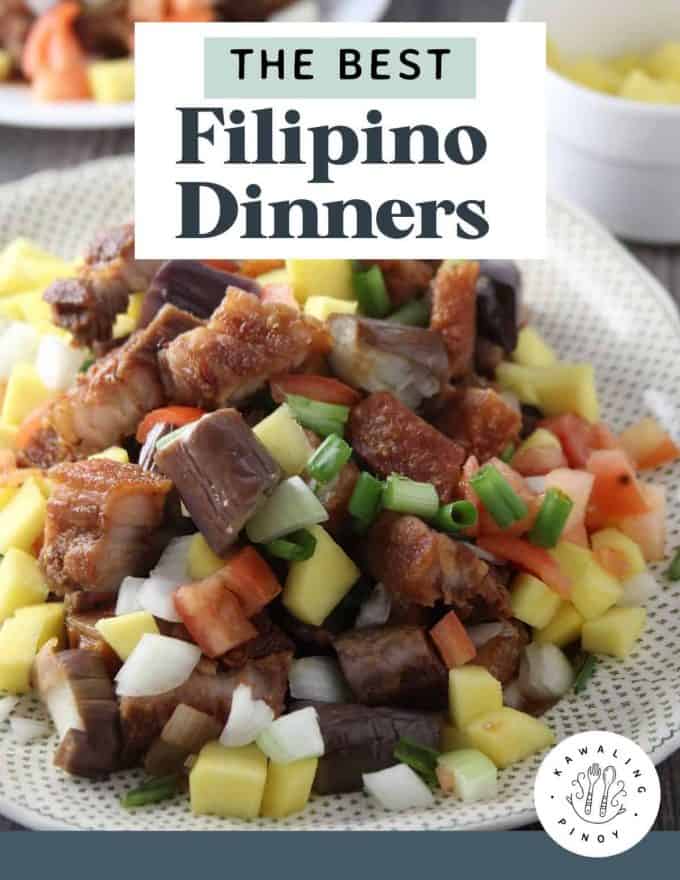

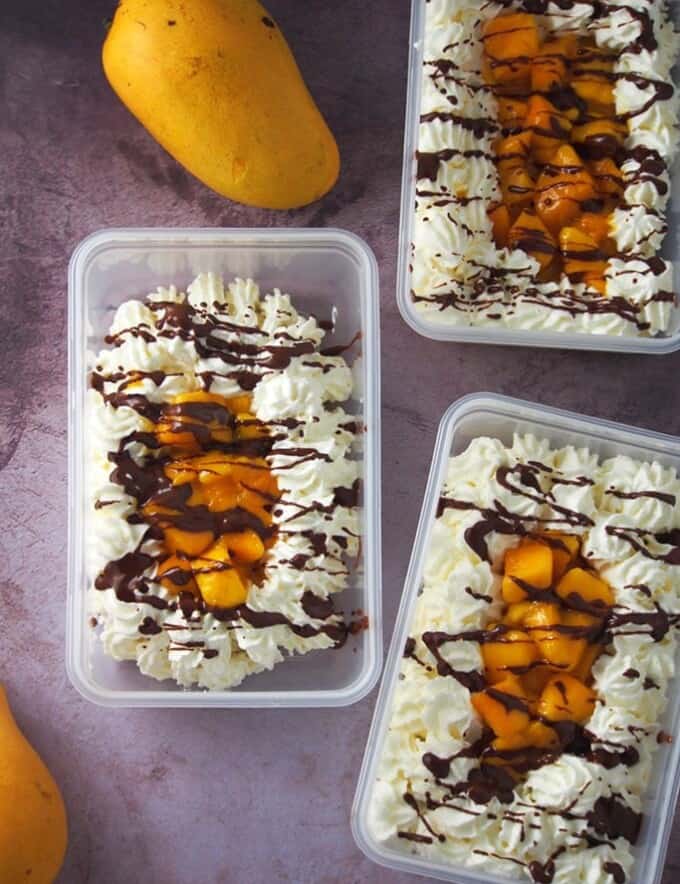
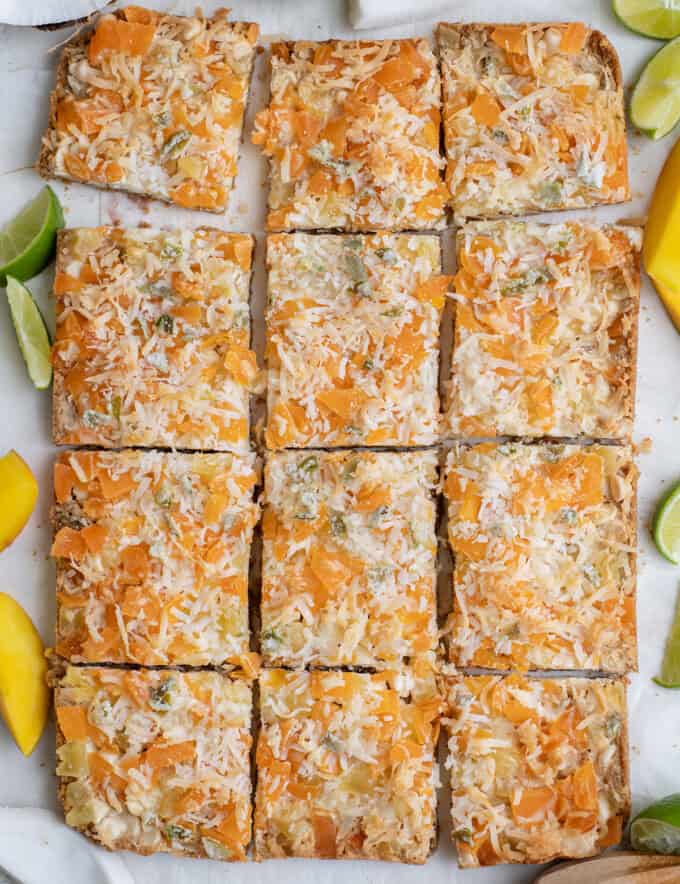
A says
AMAZING
Cecilia says
I must try this looks yummy. Thank po sa recipe
Marvi onate says
Can i use canned peaches instead of mango?
Lalaine Manalo says
I've never tried so I'm not sure how it will work with the flavors. Let me know how it turns out.
ann jenette says
where to buy furikake
Lalaine Manalo says
You can buy it at most Asian supermarkets or order online 🙂
Roxanne says
What is “quick-melt cheese?” What would I look for in a US grocery store?
Lalaine Manalo says
I usually buy Eden or Magnolia 🙂
Rasbhari says
Sushi bake is very forgiving. You can essentially add any ingredients that you’d like.
Lalaine Manalo says
Yup, so true! Always delicious 😀
Doug says
Anxious to try your Baked Sushi recipe 🧡
I'll omit the cheese but will include the other ingredients.
Thanks for posting.
Lalaine Manalo says
You're welcome. Enjoy!